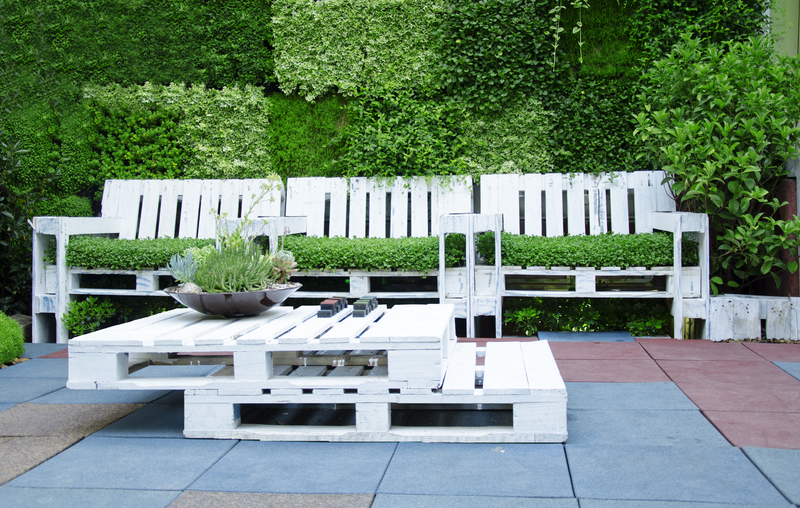Transform Your Living Space into an Eco-Friendly Paradise
Creating a living space that is both stylish and eco-friendly is more achievable than ever. With increasing awareness of environmental issues, many people are seeking ways to make their homes not only inviting but also sustainable. Below, we'll explore how you can transform your living space into an Eco-Friendly Paradise without sacrificing comfort or style.
Why Choose an Eco-Friendly Living Space?
Transforming your home into an eco-friendly haven comes with numerous benefits:
- Environmental Impact: By reducing waste and energy consumption, you minimize your carbon footprint.
- Cost Savings: Long-term savings on utility bills with energy-efficient appliances and materials.
- Enhanced Health: Use of non-toxic materials and cleaner air leads to a healthier living environment.
- Improved Aesthetics: Sustainable materials offer a unique and beautiful look for your home.

Practical Tips to Achieve an Eco-Friendly Home
1. Embrace Energy Efficiency
One of the most effective ways to create an environmentally-friendly home is by focusing on energy efficiency:
- LED Lighting: Replace incandescent bulbs with LED lights. They use less energy and last longer.
- Smart Thermostats: Install programmable thermostats to optimize heating and cooling, reducing your energy use.
- Energy-Star Appliances: Opt for appliances with the Energy Star label to ensure you're minimizing energy consumption.
2. Sustainable Furniture and Decor
Your choice of furniture and decor can make a significant impact:
- Reclaimed Wood: Choose furniture made from reclaimed or recycled materials. Not only does this reduce the demand for new resources, but it also adds a rustic charm to your living space.
- Non-Toxic Finishes: Use paints, stains, and finishes that are free from volatile organic compounds (VOCs) to improve indoor air quality.
- Ethically-Sourced Textiles: Opt for organic cotton, wool, or linen fabrics which are more sustainable choices compared to conventional textiles.
3. Maximize Natural Light
Utilizing natural light can significantly reduce your reliance on artificial lighting, saving energy:
- Skylights and Large Windows: Installing these can flood your living space with light, reducing the need for artificial lights during the day.
- Mirrors: Strategically place mirrors to reflect light and make rooms appear brighter and bigger.
4. Indoor Plants: The Natural Air Purifiers
Introducing plants into your living space not only enhances its aesthetic appeal but also purifies the air:
- Air-Purifying Plants: Consider plants like the spider plant, snake plant, and peace lily, known for their ability to clean air.
- Vertical Gardens: Maximize space utilization with vertical planters, allowing you to grow herbs and greens indoors.
5. Waste Reduction and Recycling
Implementing waste reduction practices is crucial in creating an eco-friendly home:
- Compost: Start a composting system for organic kitchen waste to enrich your garden soil.
- Recycling Bins: Set up a comprehensive recycling system, ensuring that plastics, metals, and papers are appropriately sorted.
- Reusable Products: Replace single-use items with reusable alternatives, such as cloth napkins, stainless steel water bottles, and shopping bags.
Smart Water Usage
Water-Saving Appliances
Installing water-efficient appliances can drastically cut down on your water usage:
- Low-Flow Faucets and Showerheads: These fittings save water without compromising performance.
- Dual-Flush Toilets: Allow for less water use compared to traditional toilets.
Landscape Wisely
Creating a water-efficient landscape can also contribute to conservation efforts:
- Native Plants: Using regional plants reduces the need for excessive watering and maintenance.
- Drip Irrigation: Install an irrigation system that delivers water directly to the roots to minimize wastage.

Innovative Technologies for Sustainable Living
Harness Renewable Energy
Consider transitioning to renewable energy sources for sustainable energy:
- Solar Panels: Installing solar panels can generate enough energy to supply your home, drastically reducing your reliance on non-renewable resources.
- Wind Turbines: If local zoning allows, small wind turbines can complement solar panels, adding to your green energy generation.
Home Automation Systems
Smart homes make it easier to monitor and manage energy consumption:
- Smart Lighting: Automate lights to switch off when no one is in the room, reducing unnecessary electricity use.
- Automated Blinds: Program blinds to open and close based on the sun's position, optimizing natural light use.
Conclusion
Transforming your home into an eco-friendly paradise is more than a trend; it's a commitment to a healthier planet and improved well-being. By embracing these strategies, not only will you enhance the sustainability of your living space, but you'll also set a positive example for others. Start making changes today--no step is too small in the journey towards a greener, more sustainable lifestyle.